This was published 1 year ago
A daughter’s death, a mother’s torment and a battle for change
Celeste Manno was murdered in her bed. Now her mother wants the world to hear her pain – and to save others.
By Simone Fox Koob, Dimity Clancy, Sammi Taylor and Lisa Brown

Celeste Manno’s grave at Yan Yean cemetery.Credit: Justin McManus
At the bottom of a ridge of green, undulating hills on Melbourne’s outskirts, Aggie Di Mauro sits quietly on a fold-out chair. In front of her is the grave of her eldest child and only daughter, Celeste.
Colourful flowers cover the site, entwined with glowing lights. The sun is setting over the grave, which has a large photo of the young woman, perennially 23 years old, erected in place of a headstone.
Aggie has spent countless hours sitting in this spot over the past three years. Other visitors come and go, on their way to see their own loved ones, but none have lost people in the same horrific way she has.
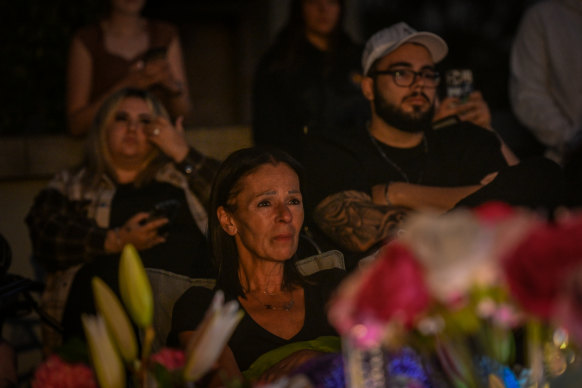
Aggie Di Mauro at the grave of her daughter.Credit: Justin McManus
The night her daughter was murdered replays in her head. Being ripped awake to what sounded like a million pieces of glass breaking. Screaming her daughter’s name as she ran down the hallway to Celeste’s bedroom. Confusion at the blood and glass. Trying to lift her daughter’s body, attempting to revive her. Pleading as she called triple zero.
“Breathe, sweetie. Please sweetie, don’t leave me.”
A knife is found, her home is a crime scene and she is standing on a darkened footpath, calling her son: “She’s gone. Your sister is gone. Come home.”
The man who caused her world to collapse in the early hours of November 16 in 2020, Luay Nader Sako, was last week sentenced in the Supreme Court of Victoria to 36 years in prison, with a non-parole period of 30 years.
It devastated the family, who feel only a life sentence is fitting for the man who stalked Celeste for a year before breaking into her bedroom window in the middle of the night and stabbing her to death.
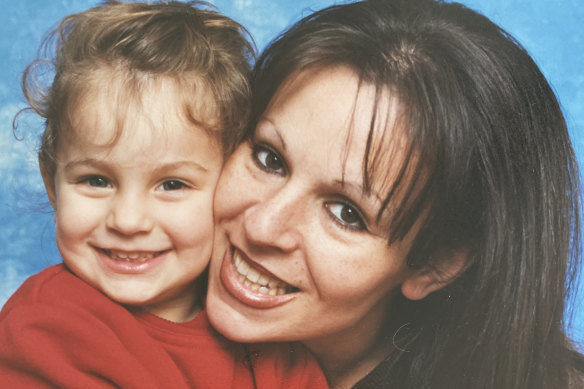
Celeste as a child with her mother Aggie.
As the court process ran its course, Aggie was reluctant to speak too freely in public, petrified that she could jeopardise the proceedings. She now feels able to discuss the case in detail, as she campaigns to hold the state government and police accountable for commitments made to better keep women safe.
“I was made promises,” she says. “And silly me, I believed it all.”
‘I should have been able to protect her’
There was nothing not to love about Celeste. Those who knew her all say she saw the best in everyone and radiated a positivity that attracted others to her.
She was close to her mother and her younger brother, Alessandro, now 22, who she lived with in Melbourne’s northern suburbs, as well as her father, Tony, who describes her as the most precious gift in his life.
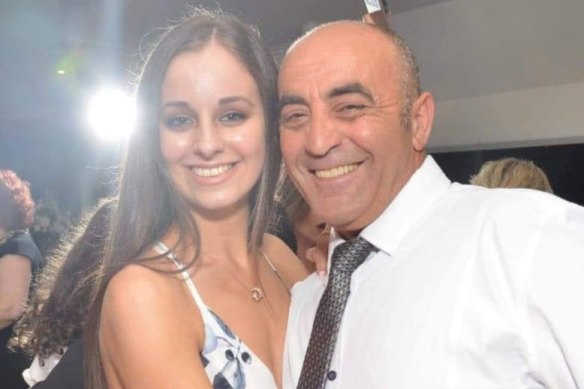
Celeste with her father Tony.
Aggie spent 23 years letting Celeste know how blessed she was to have her. The mother of two passionately describes the ways the system failed her daughter, but her voice becomes soft when she remembers Celeste.
“Every day she’d come up to me, wrap her arms around me, and I’d wrap mine around that tiny little waist of hers, and we’d kiss each other good morning.”

Aggie and Celeste.
There are few pictures of them together – Aggie has never liked being photographed – but her favourite shows them beaming, arms around each other, Celeste mid-laugh as her mother smiles down the lens of the camera.
Aggie knows she will never be that person again. In her mind, Sako’s actions destroyed any notion she had of being a good mother, and so her time is spent either at home or by the grave, denying herself anything that brings her joy.
“I don’t deserve to enjoy life if my daughter can’t,” she says. “I should have been able to protect her.”
Celeste had aspirations to be a psychologist, and worked in her early 20s as a team leader at a Serco call centre. It was here that she would cross paths with Sako, a reclusive, introverted IT worker who was born in Iraq and migrated with his parents and four siblings to Australia in 1992.
He started at Serco in April 2018 as a customer service operator but left a year later when confronted about his performance issues.
Celeste escorted him from the building on his last day. She was professional and polite. Over dinner that night, she was embarrassed and uncomfortable as she told her family that when she extended her hand to wish Sako all the best, he had kissed her on the cheek.
“She had never mentioned him before,” says Aggie. “From there is where it all started.”
Within days, Sako messaged her on Instagram, declaring his love. Chris Ridsdale, Celeste’s boyfriend at the time of her death, said Celeste regularly got messages from strangers on Instagram, and she would reply politely. But unlike others who stopped when she asked, Sako persisted.
When she blocked him, he made fake accounts, sending long, rambling messages, some reading like poetry. She would get a barrage and then not hear anything for days or weeks. Later the messages became extremely sexually explicit, describing in dozens of messages – most of which are too graphic to publish – what he wanted to do to Celeste and speculating about her sex life.
“Have you ever had a beast pounce on you Celeste?” he wrote in one. “I would pounce on you like a pitbull.”
From the beginning, Aggie was concerned. When the messages escalated in tone, so did her concern about what he could be capable of. She became anxious that Sako could find out their address. The pair located the nearest police stations in case Celeste was followed. She used an app on her phone to share her location with her mother, and reported Sako’s behaviour to her employer, so she was escorted to her car after each shift.
“We put this safety plan in place,” says Aggie. “We didn’t know what else we could do.”
Celeste was at first reluctant to go to police but with no sign Sako would relent, Aggie says they went to the station in early 2020. Aggie claims the desk officer didn’t read the majority of the messages or log the visit, telling them a crime hadn’t been committed, and advising her daughter to block Sako and consider getting off social media.

Celeste was six days away from her 24th birthday when she was killed.
Several months later, on July 1, 2020, they returned, armed with a manilla folder filled with print-outs of messages received over the year. This time, Aggie says, police seemed to take them more seriously. They were advised to get an interim personal safety intervention order, which they obtained in court two days later.
Within six weeks, despite being interviewed by police, Sako had breached the order, sending Celeste a three-and-a-half page letter begging her to withdraw the charges.
It was chilling for Aggie to read. She was scared about retaliation, and wanted to withdraw the intervention order, but she says police insisted they keep it in place. Weeks went by without any contact. Sako seemed to have disappeared, and with an overwhelming sense of relief, they believed it was over.
Sako would later tell a psychiatrist that during that silence, he was busy researching, using pictures from social media and Google Maps to find Celeste’s home, locate the floor plan of her house online to identify her bedroom, and drive past her residence.
The same psychiatrist would later opine that it was now that Sako began to oscillate between an intense love and hatred of Celeste, as he realised that his fantasy was not attainable.
“She means nothing but trouble for me, the allegations are downright false,” Sako would write in notes later found by police in his bedroom. “Her beauty is manipulated. She has an inflated sense of worth. She needs protection from whatever she has conjured up … in her overly sensitive mind.”
It was the upload of a photo that would ultimately set the horrific events of November 16, 2020 in motion. Celeste posted a picture of herself enjoying a day at the pub with Chris. Justice Jane Dixon, who sentenced Sako, described the photo as the final trigger for the offending. For Chris, the fact this photo played such a large role in the murder haunts him.

Manno posted a photo of her and her boyfriend, Chris Ridsdale, to social media hours before she was murdered.
“He had obviously made a decision that he couldn’t live with her being happy and going on without him … and he decided to rectify that,” he says.
Just hours later, at 3.22am, Sako left his Roxburgh Park home, drove to Mernda, smashed through her bedroom window and killed Celeste. The attack lasted less than three minutes. She suffered 23 wounds, on her chest, abdomen, back, legs and scalp, as well as defensive wounds on her arms. A stab wound to the heart killed her.
The justice system was largely a mystery to Aggie before 2020. Now the muted halls of Victoria’s Supreme Court are familiar, a place she has navigated countless times.
She watched in disbelief as Sako tried to shift the blame for her daughter’s murder. Even in the hours after the killing, he drove to the nearest police station and told officers present: “It’s your fault.” During his police interview he complained of “unfair and unjust” treatment from Celeste, the police and the court, and refused to accept responsibility.
In custody, three psychiatrists formed the view Sako was faking psychosis symptoms, particularly around his account of being visited by a figure called “Isha”, an ugly person with big nose, ears and pointy teeth. Sako claimed Isha was in the car with him on the way to the murder and told him to “end it”.
A forensic psychiatrist who diagnosed Sako with an extreme personality disorder, Dr Rajan Darjee, said Sako faked psychotic symptoms to attract sympathy.
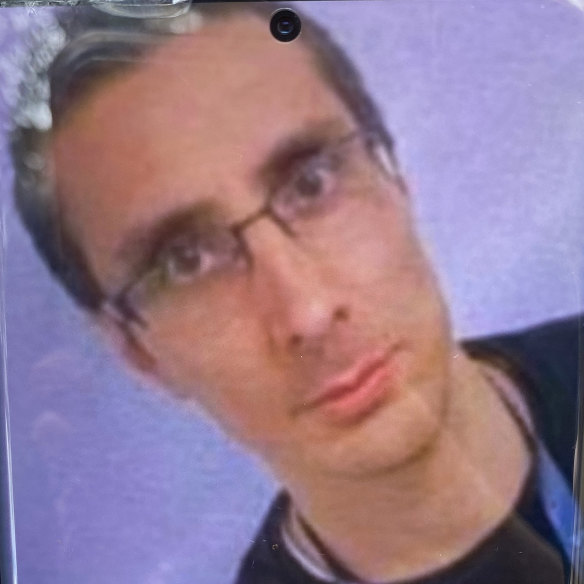
Luay Sako.
Sako also tried to persuade psychiatrists he was eligible for the mental impairment defence, using wording similar to the criteria used to assess people for the special defence during one session with Darjee. The psychiatrist later said he had never assessed anyone with this level of knowledge and understanding of the criteria, or who had used the direct wording regarding a defence of mental impairment.
Several psychiatrists pronounced him fit to stand trial.
Sako changed his plea repeatedly as well as switching lawyers, causing further delays. He represented himself for part of a January plea hearing and quibbled over details in the prosecution’s evidence, including the number of times he stabbed Celeste. Being unrepresented meant he cross-examined the pathologist who had completed an autopsy on Celeste.
It was brutal testimony for Celeste’s family to hear, detailing each wound, its size, location, depth, the angle, whether it was ragged, incised or superficial.
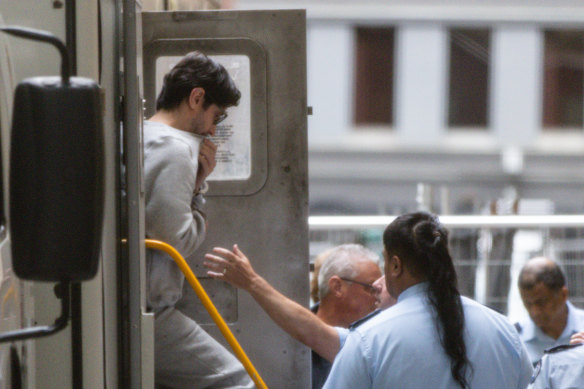
Luay Nader Sako arrives at the Supreme Court in Melbourne in January.Credit: AAP
As a result, her family now know how each wound was categorised during the autopsy. Wound one was a stab wound to the heart. The judge, who said Sako carried out the attack with “chilling efficiency”, ruled she was satisfied Sako stabbed Celeste multiple times, and did not need to determine the exact number of wounds.
Sako’s lawyer, who he re-engaged towards the end of his plea hearing, urged the judge to find that while Sako had displayed a lack of empathy for Celeste’s family, he had not deliberately sought to frustrate or delay the legal process, but struggled to see things from others’ perspectives due to his personality disorders.
The judge accepted this submission, opining that she did not believe the legal delays were due to “any particular dilatoriness” on Sako’s part. The family strongly disagree.
“He spent three years trying to weave his way through the legal system,” says Aggie. “Being in court facing the demon that took my daughter away from me was the most challenging experience in my life, other than the night she was killed.”
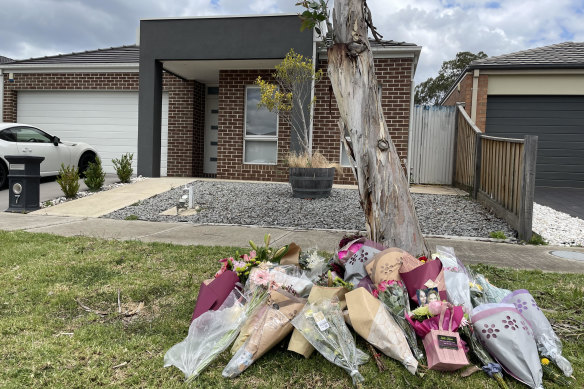
Flowers left outside Celeste’s home in Mernda where she was killed in November 2020.Credit: Simone Fox Koob
Less than a month after Celeste’s death, the state government promised an “urgent” review of stalking and committed to do everything it could to support women to feel safe.
The Victorian Law Reform Commission’s landmark report – the first Australian inquiry into non-family violence stalking laws – was released in July 2021.
It described a fragmented system, with “significant” knowledge gaps about what causes stalking behaviour and how to address it. Crucially, it found the criminal justice system was not dealing effectively with stalking, victims were not believed, and reports were often minimised or trivialised.
Its 45 recommendations ranged from greater community education about stalking to improving the swamped personal intervention order system and increasing guidance for police and courts to identify and prioritise stalking cases.
Aggie says her first few discussions with the state government seemed fruitful and she was told all the report’s recommendations would be swiftly implemented.
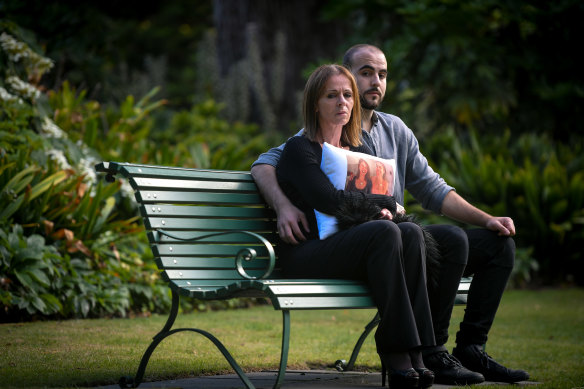
Celeste’s mother Aggie and brother Alessandro.Credit: Eddie Jim
“I wanted answers,” she says. “They said ‘we will look at what needs to change’.”
However, she has tried to organise further meetings with Victorian Attorney-General Jaclyn Symes in the past six months without reply. Aggie believes if Celeste’s situation occurred today, the response from authorities and outcome would be exactly the same.
“What has changed for victims? Nothing. No recommendations will get Celeste back, but let’s fight this to at least help others.”
Aggie wants more research and consideration of electronic monitoring for high-risk offenders. This wasn’t a measure recommended by the law reform commission, which found it was unlikely to keep people safe.
Symes and the acting chair of the commission Jennifer Coate both said this conclusion had been reached on the available research, and the position could change if future expert evidence showed it was an appropriate tool.
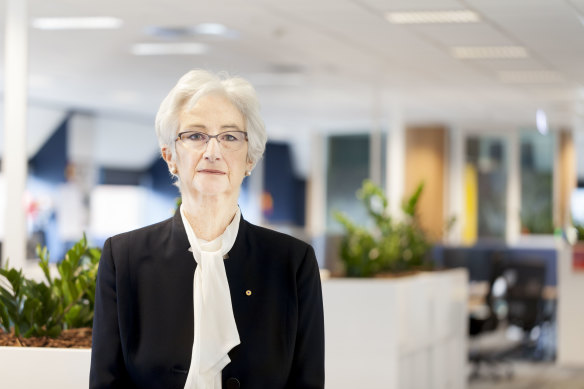
Jennifer Coate, the acting chair of the Victorian Law Reform Commission, says the report into stalking laws found that victims were often not believed or their claims were trivialised.
Coate says there are few signs that the system has improved in the almost three years since the report’s release.
“We wouldn’t be in a position to say [the system] has markedly improved in the wake of the report,” she says. “There are vast pockets of lack of information and lack of understanding of the complexities of the behaviour that forms stalking.”
The report also found that the offence of stalking – which carries a maximum jail term of 10 years in Victoria – was not often used by police, as it was complex and not easy to prosecute. Instead, it was often easier to charge offenders with other, more commonly used offences. It recommended making the offence clearer so that it can be more easily understood.
Coate says that using other charges instead of the stalking created other issues. “It actually hides what’s happening,” she says. “Then the figures for stalking look much smaller than they really are.”
Swinburne University professor Troy McEwan, a clinical and forensic psychologist and leading researcher on stalking, says Victoria’s lack of recognition of what constitutes stalking means intervention orders are used in many cases rather than recognising that a crime may have already occurred.
“At every stage of the criminal justice system, you get a winnowing out of cases; they’re being labelled things other than stalking, so the size of the problem ‘disappears’,” says McEwan.
So many personal safety intervention orders are issued, she says, that it’s difficult for police to have an appropriate response when they are breached.
“They really are almost a pointless piece of paper because they cannot be policed adequately,” she says.
The Victorian Law Reform Commission’s report found that police often used personal safety intervention orders when stalking behaviours were reported to them, leading to a system that has been swamped with these types of civil orders. Coate says that in these sorts of numbers, without specialisation, awareness and training, it’s difficult to identify those cases in the high-risk category.
Statistics show that in the ten years from 2011 to 2020, there were over 100,000 applications for personal safety intervention orders, and almost 26,000 breaches recorded by police. In the same period, police recorded 25,130 stalking offences.
While McEwan notes homicide is a rare outcome in stalking cases, there are lessons from Celeste’s case.
“I think Celeste Manno’s killing was extraordinarily unusual, but everything up to that point was very ordinary in stalking cases in the persistence of the behaviour over many, many months,” she says.
McEwan had high hopes for the law reform commission’s report, but that it has been gathering dust. “I think it’s a missed opportunity. And I think there’s a significant opportunity to make some important changes off what is a completely tragic and awful case,” she said.
Asked whether she was disappointed that the recommendations from the report had still not been implemented, Coate says it was a matter for the government, but adds: “We have used quite strong language about the importance of responding to a system that needs a response.”
Victorian Attorney-General Jaclyn Symes told The Age and 60 Minutes that Victoria Police was completing an evaluation of the Screening Assessment for Stalking and Harassment, known as SASH, a tool used to assess the risk level of reported stalking cases which has been piloted at a number of stations.
Symes said early signs of the pilot were positive.
“I know that the system failed that family,” she said. “Police know that after Celeste’s death that changes had to happen … I think there has been cultural change since the death of Celeste.”
Symes says the report’s other recommendations were “very broad” but are all being considered, and she was discussing with stakeholders whether the offence of stalking needed to be made clearer.
“[Stalking is] a challenging complex problem. There are no easy fixes. If there were we would have done them already,” she says. “Celeste shouldn’t be dead. I am motivated to make changes to this system. We’ve started that and we’ll continue to do so.”
She says she will continue to engage with Celeste’s family noting it can be sensitive to meet with victims during active court cases.
“The sentence has now been handed down and we’ve reached out to Aggie to catch up,” she said.
At her suburban home on Melbourne’s outskirts, Aggie has spent three years studying, printing out and closely reading Victorian judges’ remarks in murder sentences and devouring anything she can access that relates to crime and punishment.
“In order to cope with living without Celeste, I decided to prepare myself and always know exactly what was going to happen. I buried my head in the books,” she says. “I’m not sure that I have anything left to do if I don’t do this.”
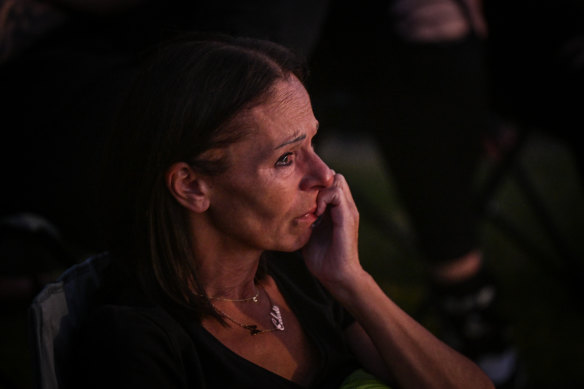
Aggie at the grave site. Credit: Justin McManus
She has filed a civil claim against Victoria Police, alleging that police didn’t properly conduct risk assessments relating to the threat that Sako would harm Celeste and didn’t charge him with stalking, among other alleged failures, which amounted to a breach of their duty of care.
Acting deputy commissioner specialist operations Lauren Callaway declines to comment as that case is now before the courts. She says evaluation of SASH screening mechanism would be completed this year, which will inform broader organisational approaches to stalking.
Celeste’s family has also been told there will be an inquest to make recommendations for further change. A Coroner’s Court of Victoria spokesperson confirmed the coroner is investigating Celeste’s death, but it has not been confirmed if an inquest will be held.
More urgently, Aggie and her family want the Director of Public Prosecutions to lodge an appeal and fight for a life sentence. A spokesperson for the Office of Public Prosecutions said it reviews all sentences imposed in its cases.
Aggie believes all murderers should be sentenced to life in prison, and her family has started a petition to garner community support and have started a website to campaign for change in Celeste’s name.
“I can’t do this alone,” says Aggie. “No parent should ever have to face the prospect of seeing their child’s killer walk free, let alone be told what happened to Celeste did not warrant a life sentence.
“Women can’t safely walk home alone at night, and Celeste’s death shows they can’t even sleep safely in their own bed, in their own home.”

Family and friends gather at the grave of Celeste for a vigil in late February.Credit: Justin McManus
As Aggie continues her fight, she clutches a gold heart in her hand. It contains some of the ashes of her daughter, a young woman who had saved pictures of a wedding dress she one day wanted to wear, and a list of names picked out for the children she hoped to have.
“Nothing will get me Celeste back. I’ve tried to work out, what on earth is my purpose here? What am I supposed to do? And I absolutely believe she wants me to fight for change.”
Watch the 60 Minutes interview with Aggie here.
Get the day’s breaking news, entertainment ideas and a long read to enjoy. Sign up to receive our Evening Edition newsletter.